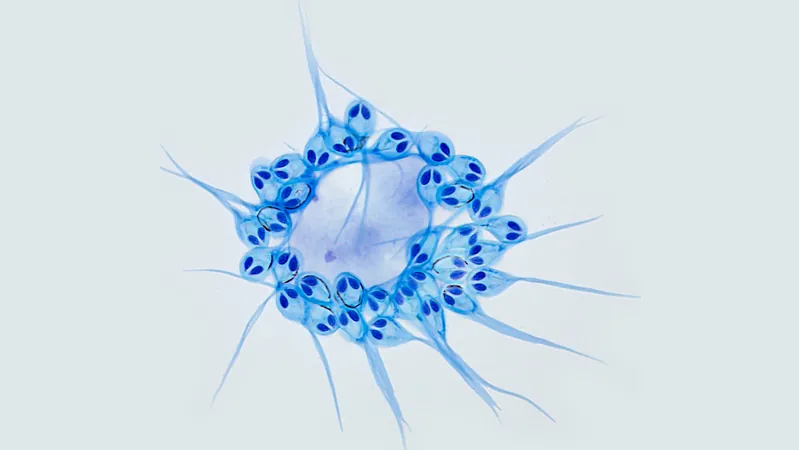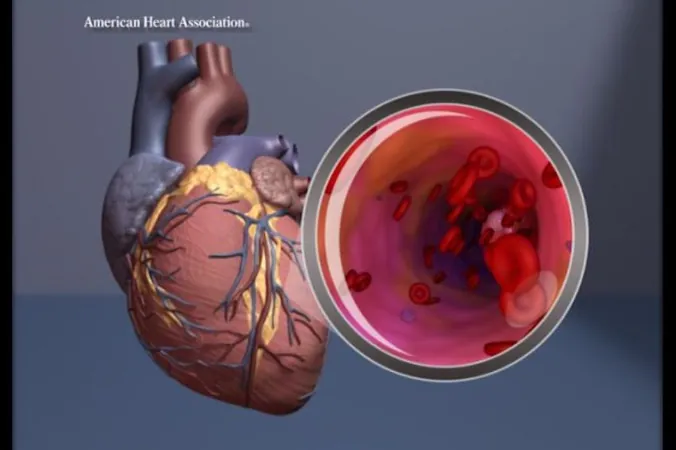
Groundbreaking Discovery: The Oxygen-Defying Life of Henneguya salminicola
2025-01-12
Author: Mei
Introduction
In a remarkable revelation, researchers have uncovered that the myxozoan Henneguya salminicola, a parasitic organism closely related to jellyfish, has completely lost its mitochondrial genome. This dramatic adaptation signifies a major shift away from the stereotypical aerobic respiration process, traditionally considered a hallmark of eukaryotic life.
The Role of Mitochondria
Mitochondrial respiration has long been regarded as an essential characteristic of eukaryotes, providing vital energy in the form of ATP through the utilization of oxygen. However, this function has independently vanished in multiple organisms, as they adapted to low-oxygen environments.
Research Methodology
The research team employed advanced deep sequencing techniques, combined with microscopic examinations, to ascertain that H. salminicola no longer possesses the genetic machinery required for aerobic respiration.
Cell Structures and Genetic Findings
Interestingly, while these cells retain some structures akin to mitochondria, labeled as mitochondrion-related organelles (MROs), they have lost crucial genes associated with both aerobic metabolism and the replication of mitochondrial genomes. The implications of this finding are substantial, challenging the previously universal view that aerobic respiration is a prerequisite for all animals.
Evolutionary Insights
Previous assumptions posited that while some single-celled organisms have lost mitochondrial functionality, their multicellular counterparts, like H. salminicola, would adhere to the aerobic model. However, this new study establishes that even multicellular parasites can evolve to thrive in anaerobic environments.
Comparative Analysis with Myxobolus squamalis
In stark contrast, a closely related myxozoan, Myxobolus squamalis, retains a full mitochondrial genome, underscoring the evolutionary divergence between these species. Microscopic analysis using DAPI staining has confirmed the absence of mitochondrial nucleosomes in H. salminicola, while M. squamalis displays the expected mitochondrial structures.
Conclusions and Implications
This groundbreaking discovery highlights a fascinating evolutionary transition from aerobic to exclusive anaerobic metabolism within a multicellular organism. It emphasizes the adaptability of life forms in extreme environments, opening new pathways for scientific exploration into anaerobic metabolic processes.
Broader Impact on Understanding Evolution
The implications of this research extend beyond the realm of myxozoans, potentially informing our understanding of evolution and metabolism across various life forms. As scientists continue to unravel the complexities of these unique organisms, Henneguya salminicola stands as a testament to life’s tenacity and adaptability.
Future Research Directions
This remarkable find invites further investigation into the lifestyles of similar organisms and sheds light on the evolutionary pathways that allow life to persist under the most adverse conditions. What other secrets lie hidden in the depths of our oceans, waiting to be uncovered? Stay tuned!


 Brasil (PT)
Brasil (PT)
 Canada (EN)
Canada (EN)
 Chile (ES)
Chile (ES)
 Česko (CS)
Česko (CS)
 대한민국 (KO)
대한민국 (KO)
 España (ES)
España (ES)
 France (FR)
France (FR)
 Hong Kong (EN)
Hong Kong (EN)
 Italia (IT)
Italia (IT)
 日本 (JA)
日本 (JA)
 Magyarország (HU)
Magyarország (HU)
 Norge (NO)
Norge (NO)
 Polska (PL)
Polska (PL)
 Schweiz (DE)
Schweiz (DE)
 Singapore (EN)
Singapore (EN)
 Sverige (SV)
Sverige (SV)
 Suomi (FI)
Suomi (FI)
 Türkiye (TR)
Türkiye (TR)
 الإمارات العربية المتحدة (AR)
الإمارات العربية المتحدة (AR)